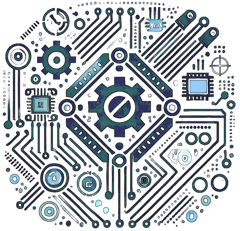Objective
This experiment demonstrates how a bypass capacitor is used to filter high-frequency noise from a power supply in a circuit. This is crucial for providing a stable power supply to sensitive components like microcontrollers and analog circuits.
Components Required
- 1 x Bypass Capacitor (0.1µF or 1µF, ceramic)
- 1 x DC Power Supply (5V)
- 1 x Resistor (1kΩ)
- 1 x Oscilloscope (for observing noise levels)
- 1 x Breadboard
- Connecting Wires
No Ads Available.
Theory
A bypass capacitor is used to shunt high-frequency noise to ground, preventing it from reaching the power pins of sensitive components. The capacitor charges and discharges rapidly to smooth out voltage fluctuations and spikes, thus stabilizing the power supply.
Circuit Diagram

Experimental Setup
1. Connect the positive terminal of the 5V DC power supply to the breadboard's power rail.
2. Place the 0.1µF ceramic bypass capacitor between the power rail and ground.
3. Connect a 1kΩ resistor from the power rail to ground to simulate a load.
4. Use an oscilloscope to measure the voltage across the power rail with and without the bypass capacitor connected to observe any noise reduction.
Procedure
- Turn on the power supply and measure the voltage on the power rail using the oscilloscope without the bypass capacitor connected.
- Observe the noise and fluctuations in the power supply.
- Now, connect the bypass capacitor between the power rail and ground.
- Again, observe the voltage on the oscilloscope and note the reduction in high-frequency noise and voltage spikes.
- Try using different capacitance values (such as 1µF or 10µF) and observe how the noise filtering improves or worsens.
Results and Observations
With the bypass capacitor in place, the oscilloscope should show a significant reduction in high-frequency noise and voltage spikes on the power rail. The power supply will appear more stable with smoother voltage lines.
Conclusion
In this experiment, we demonstrated the effectiveness of a bypass capacitor in filtering out high-frequency noise from a power supply. Bypass capacitors are essential components in modern electronic circuits, ensuring that noise and voltage fluctuations do not interfere with the normal operation of sensitive devices.


